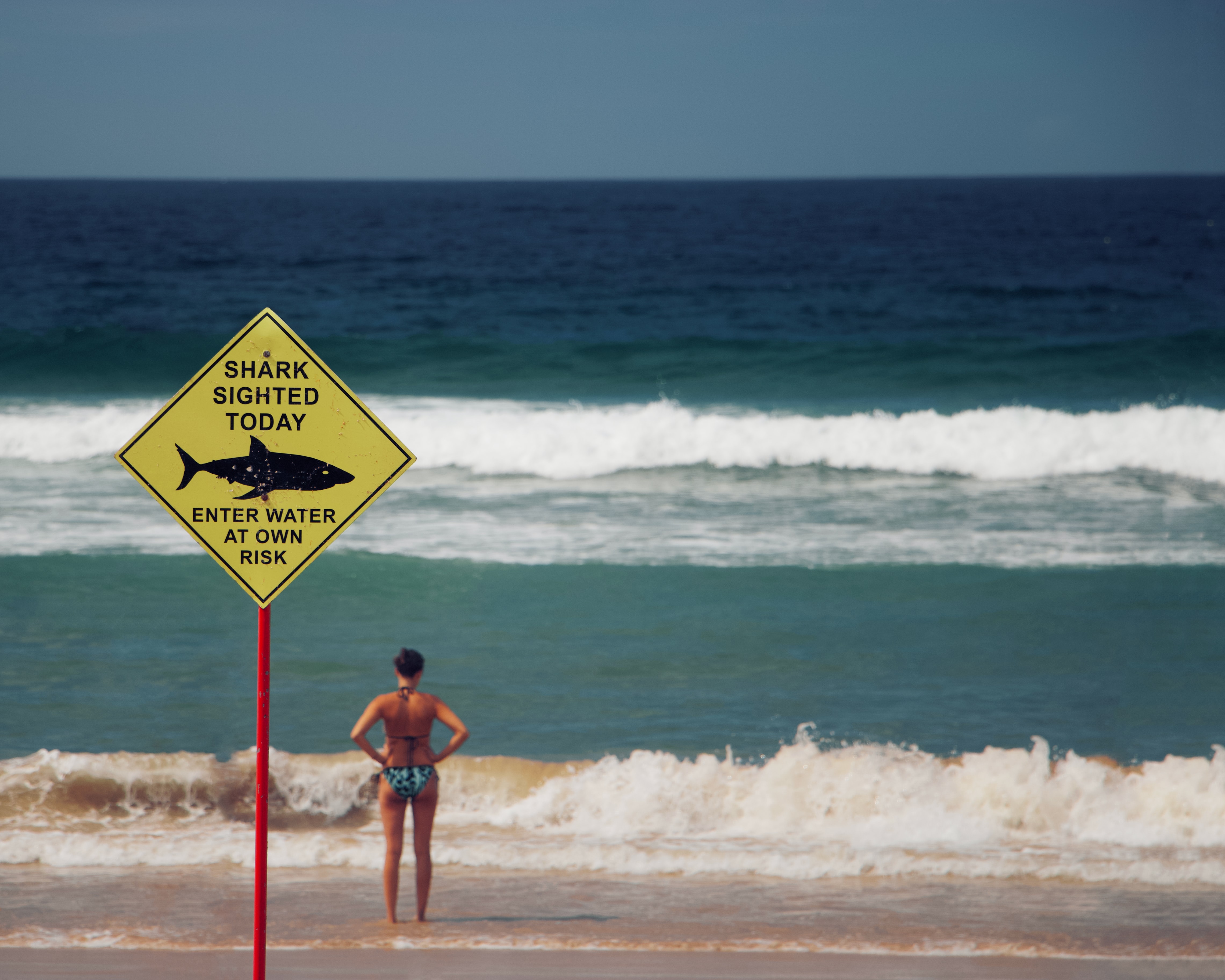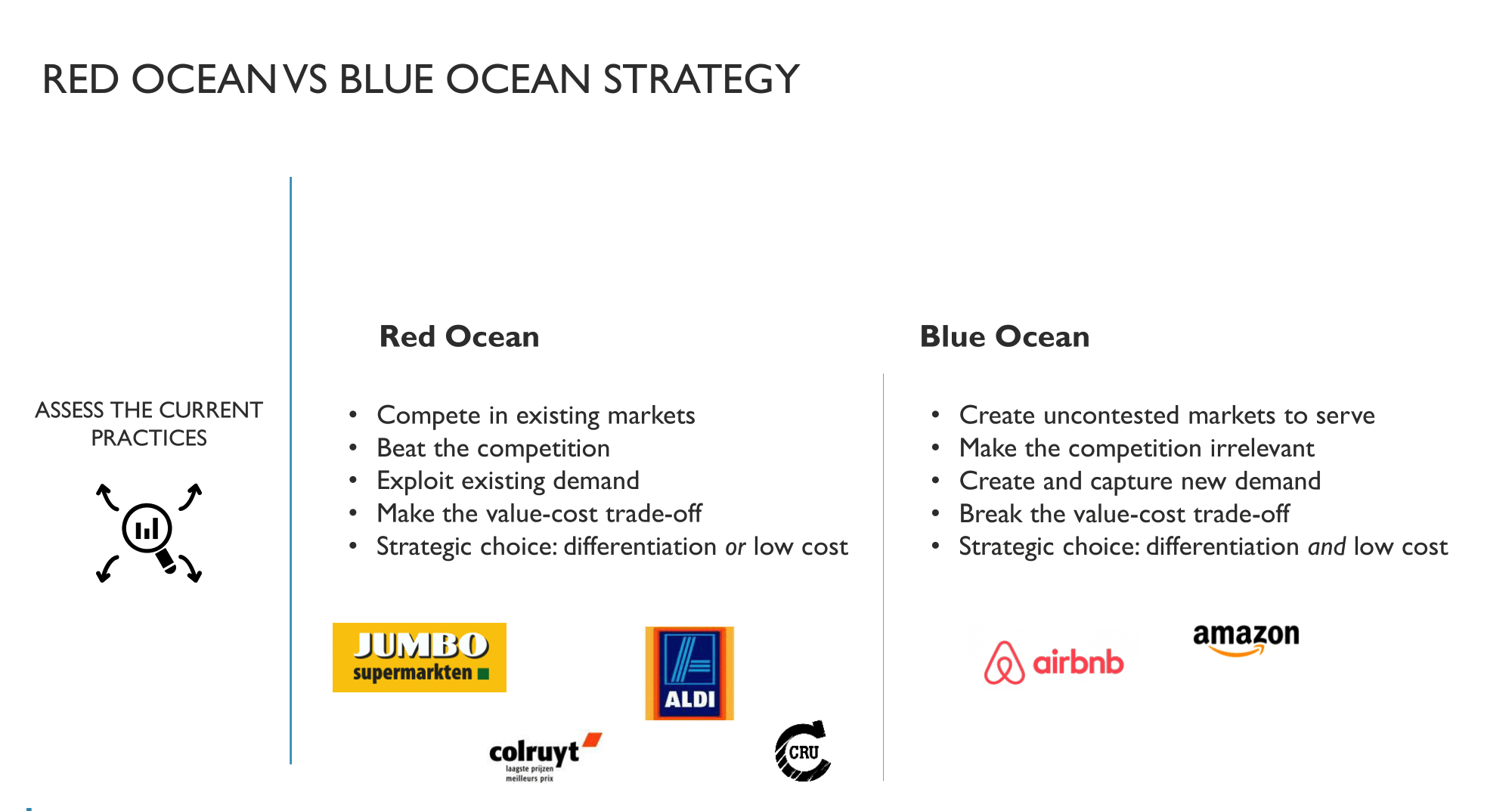
Does Your Sport Startup Find Itself In A Red Ocean Or A Blue Ocean?
13th Oct 2020
Most of us dream of improving the sports industry or another individual’s sports experience. In many cases, this is because we experience(d) a need ourselves. Which means when we start turning this dream into a startup, we need to approach the creation of our business with a critical eye, making sure we are working towards developing a business that is sustainable - and towards designing a product or service that (enough) people are willing to pay for.
That’s why right after defining your primary types of customers, you will need to make sure that the problem you aim to solve is real and worth solving. This is done by researching your ideal customers’ journey to discover which problems they experience, how ‘big’ their ‘pain’ is, followed by assessing the ways they’re currently trying to solve or bypass that problem. This can be done in 3 different ways: buying from direct or indirect competitors, using alternatives or changing their behaviour.
But what if you find out that you’re not the first business in the market to offer that particular solution… should you just cease and desist?
Or if you get the confirmation that you’re the first to offer a certain type of solution, does that mean you’re certainly set up for success?
No, and no. You need to check one more thing: are you going to be competing in a red ocean, or a blue ocean?
Wait, what are ‘red’ and ‘blue oceans’?
Tesla was the first to create a 100% electric car that is fast, beautiful and has a large radius. Netflix killed the video store and opened the doors to streaming content. Uber capitalized on an existing need –transportation– but provided a fast, convenient, and cheap service that essentially created the new industry of ride-sharing. Amazon disrupted the book store business, and Airbnb made it possibly for you and me to rent out our beds to make some extra euros.
These are all examples of ‘blue ocean’ opportunities, as defined by the popular book 'Blue Ocean Strategy' by professors W. Chan Kim and Renee Mauborgne. They state that there are two types of market opportunities when you create a startup from scratch: red oceans and blue oceans.
Red oceans are all the industries in existence today - the known marketplace. They’re called ‘red’ due to the prevalence of fierce cut-throat competition that turns the ocean bloody red.
Blue oceans, by contrast, are all the industries not in existence today - the unknown marketplace. Unexplored and untainted of competition, blue oceans are vast, deep and powerful in terms of opportunity and growth.
Both types of oceans demand a specific strategy for your startup to survive and thrive.
 A red ocean strategy is all about beating the competition.
It has the following common characteristics:
A red ocean strategy is all about beating the competition.
It has the following common characteristics:
- You’ll be competing in a marketplace which already exists.
- The market space is more crowded and you will have to compete fiercely for a greater share of the existing demand, which is limited.
- You’ll have to focus on the value/cost trade-off. Which is the view that a company has the choice between creating more value for customers but at a higher cost, or reasonable value for customers at a lower cost.
- A big part of your focus will need to be on execution (better or more aggressive marketing, more advertising, lower cost base, etc.).
A red ocean ultimately forces your startup to choose one of two strategies: differentiation or low cost - and you might have to settle for a smaller market share.
A good example of a company in a red ocean is airline operator Ryanair. Competing very successfully in the already saturated red ocean of the short-haul airline business, their strategy is focused on providing a low-cost no-frills airline. It is able to achieve low costs through many methods including using secondary airports further away from a city than the main airport, allowing only online booking and check-in, and requiring customers to pay for all extras, amongst other methods. In Ryanair’s case, the service isn’t great or differentiated from other carriers, but it is cheap.
A blue ocean strategy, in contrast, creates new demand, and has these characteristics:
- You are developing uncontested market space, rather than fight over a shrinking profit pool.
- As you create new market space, you’ll actually make the competition irrelevant.
- New markets also means new demand.
- You can break the value/cost trade-off: without competitors to compare, you set the standard or what value customers get at what cost.
In a blue ocean, your startup will thus be able to achieve differentiation ànd at the same time, low cost. Giving you more flexibility, lower costs, and domination over nearly 100 percent of the market share.
Nintendo created a blue ocean when it launched the Wii, sold with its classic game WiiSports. For years, gaming companies had focussed on making better and better machines, while Nintendo focussed on making the Wii fun. This created a blue ocean (as families bought the devices, not hardcore gamers) and lead to big margins for Nintendo.
Other blue ocean examples you will probably know: the rise of survival runs created a new niche in the running sector, just like the many colour runs and city runs.
Both ocean strategies produce different outcomes
Competing in red oceans is a zero-sum game. A market-competing strategy divides existing wealth between rival companies. As competition increases, your prospects for profit and growth decline.
On the other hand, creating blue oceans is non-zero-sum. There is ample opportunity for growth that is both profitable and rapid.
So, what kind of ocean are you sailing, and what's your strategy?
Does all of this mean a blue ocean strategy is preferred above a red ocean strategy for your startup? Not necessarily.
Henry Ford was laughed at when he proposed the car as the replacement for the horse. “If I had asked people what they wanted, they would have said faster horses” is not a real quote of him, but it says a lot; while the market was deeply red saturated, his much lower priced model T stole all the market share. All depends on your product, service, solution value, and your target audience.
So what matters most, is you doing your homework in order to make well-funded choices - and when you do that, you’ll be well on your way to success.